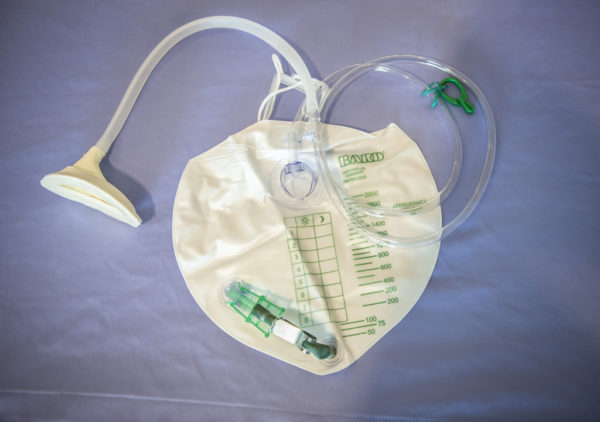
Let’s Talk About Catheters!
We’ve been hearing rumors that catheters are not allowed in ALFs and this is not always the case. ALF Boss will try to clear up the exceptions so you can best assist your residents.
A urinary catheter is a flexible tube that collects urine directly from the bladder and, typically, drains it into an ostomy bag. It is a medical device that allows individuals to empty their bladders when they can’t do so on their own and, most of the time, are welcome for use in ALFs. There are many different types and means of insertion, maintenance, and replacement. A catheter can be a temporary experience for a patient after, say, a surgery, but often in the elderly, it can be required for a longer, even permanent, duration.
Florida Statute 58A-5.0131 defines the ADL of Toileting as: “Assisting the resident to the bathroom, helping to undress, positioning on the commode, and helping with related personal hygiene, including assistance with changing an adult brief. Assistance with toileting includes assistance with the routine emptying of a catheter or ostomy bag.”
So clearly, helping a resident with their catheter is part of regular assistance with the tasks of daily living.
However, this does not include the (typically) non-daily but still routine task of changing the catheter itself. While a bag may have to be drained several times a day, typically, catheters need to be removed and/or replaced by a medical professional as infrequently as once a month. Whatever the frequency, which must be determined by a documented physician’s order, this is a procedure that CANNOT be done by a CNA in a Standard License ALF and so must also come with a physician’s order for Home Health. As with most medical devices, the exception remains that able residents or their family members can change the catheter themselves if approved by a doctor.
There are many different kinds of catheters and ostomy bags, so you want to have a clear conversation with the resident and prescribing physician before making any assumption as to what maintenance will be required.
It is worth noting that a resident with a catheter may need special attention while bathing, increased assistance while dressing, and other seemingly unrelated support while under your care. A poorly maintained catheter and/or ostomy bag can make individuals more prone to UTIs and other infections.
Exceptions!
Certain catheters can be inserted and removed by the resident themselves at the time of urination. There is no limit on this activity as it does not require assistance from your staff, but we still recommend maintaining a physician’s order on file.
Some residents may be otherwise good candidates for assisted living but not have the capacity to recognize or recall the need for a catheter. In these situations, they may try to remove the catheter themselves which can cause damage if not done properly. This would make them NOT suitable for your ALF and a physician can substantiate this with a written order.
Florida Statute 58A-5.031 on Limited Nursing Services, a supplement to your ALF license that comes with its own fees and requirements, clearly establishes the “Replacement of an established self-maintained indwelling urinary catheter, or performance of intermittent urinary catheterizations” and “catheter, colostomy, ileostomy care, and maintenance” Foley Cathetersas permitted nursing services. As would be expected, ALFs with an ECC supplement to their license may also provide these nursing services in-house.
In short, you do not need to deny admittance into your facility simply because a potential resident uses a catheter. While there are certainly exceptions, many individuals can live independently with these medical devices. As always, talk with the doctor and document, document, document.